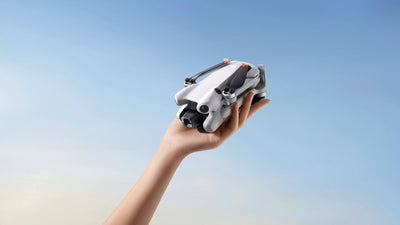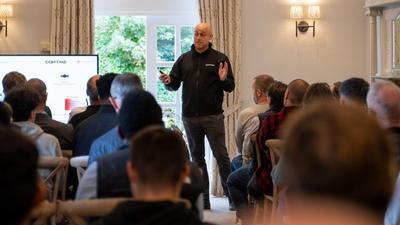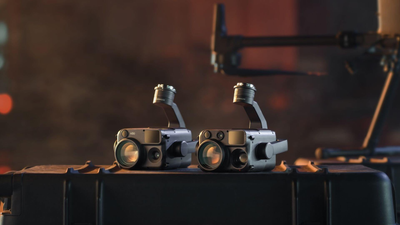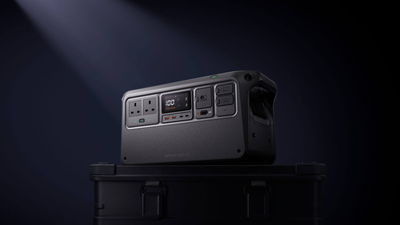Getting Into FPV Drones? Here’s Everything You Need To Know
- by Stefan Gandhi
There’s a whole new level of drone flying that puts you right in the cockpit. Welcome to FPV (First Person View), a fast, immersive and highly addictive style of piloting where the line between gamer and aviator blurs. If you’ve ever dreamed of flying like a bird or threading through tight gaps at breakneck speeds, FPV drones are your ticket to that adrenaline rush.
But this isn’t your typical drone photography game. FPV is hands-on, DIY heavy and deeply community driven. Whether you want to race competitively, explore new landscapes from a pilot's view, or capture jaw-dropping aerial footage with unmatched agility, the FPV world opens up a technical, creative and thrilling frontier.
In this guide, we’ll break down every step to get you airborne, from essential gear and practice methods to building advice and safety rules. Strap in: your flight into the FPV universe starts now.
What Is an FPV Drone?
Unlike typical camera drones, FPV drones are raw, responsive and built for immersion. With video goggles strapped on, you're not just piloting a drone, you're virtually onboard, experiencing flight in real-time from the drone's viewpoint. This high-speed, high-adrenaline perspective is what draws so many into FPV.
Most FPV drones are hand-built or modular, using carbon fibre frames and durable components. While camera drones prioritise stabilisation and automation, FPV quads give the pilot complete manual control, enabling extreme precision and creative freedom. This also means the learning curve is steeper, but the rewards are far greater.
First Things First: Get on the Sticks
Before diving into gear shopping or building a drone, start with the basics:
- Radio Transmitter: Invest in a quality controller compatible with simulators. ExpressLRS-supported radios are the current gold standard.
- Flight Simulators: Use software like Liftoff or Velocidrone to learn how drones handle in Acro mode. Clock in at least 10 hours for a solid foundation.
Mastering the controls in a sim gives you the confidence and skill to handle real-world flying without breaking your first quad.
Know Your Flying Style
Understanding what kind of FPV flying you want to pursue will shape every choice that follows:
- Freestyle: Flowing tricks and aerial artistry.
- Racing: Speed-focused competition through gates.
- Cinematic: Smooth, controlled movements for video.
- Long Range: Endurance flights across great distances.
Each style has unique drone types, gear and tuning needs, so define your goal early.
The Drone Itself: Types and Sizes
Drones come in many configurations, and each suits a different style:
- Tiny Whoop (1 to 2-inch): Indoor, ultra-light, beginner friendly.
- 3 to 4-inch: Compact and nimble for sub-250g builds.
- 5-inch: Most versatile, great for freestyle and racing.
- 6 to 7-inch: Long-range powerhouses.
- Cinewhoops: Ducted for indoor and cinematic footage.
- X-Class: Massive, high-speed, not for beginners.
To Build or Not to Build
Build Your Own:
- Full control over quality and configuration.
- Learn repair skills from the ground up.
Buy Pre-Built:
- Fastest way to get flying.
- Less technical barrier to entry.
For many, a hybrid approach works: start with an RTF kit, then build your next drone when you know what you want.
Core Components and Equipment
- Flight Controller (FC): The drone's brain.
- ESC (Electronic Speed Controller): Powers the motors.
- Motors and Props: Determine thrust and handling.
- Camera and VTX: Send the video feed to your goggles.
- Radio and Receiver: Control signal link.
- Battery (LiPo): High-performance power source.
- Goggles: Your eyes in the sky.
Choose components that work well together and suit your flight style. Forums and build guides are invaluable here.
FPV Video Systems Compared
- Analogue: Affordable, reliable, lower image quality.
- DJI: Premium digital clarity, great for cinematic flying.
- Walksnail: A solid alternative to DJI.
- HDZero: Exceptional latency performance for racers.
Learn to Fly (For Real)
- Start with smaller quads for lower risk.
- Practise often and avoid Angle Mode once you're comfortable.
- Use Acro Mode to learn true control.
- Expect to crash and treat each one as a lesson.
Record Like a Pro
If you want share-worthy footage, add an HD action cam like a GoPro or Insta360. Mount it with TPU holders and keep weight in mind.
Tuning and Software Setup
- Use Betaflight to configure your FC.
- BLHeli Suite helps tweak your ESC.
- Use Blackbox logs for advanced tuning, or stick with default PIDs to start.
Field Readiness: Safety and Etiquette
- Always check what channel others are using before powering up.
- Fly in clear, legal spaces away from people and animals.
- Never catch a drone mid-air.
- Have a spotter if flying long-range.
Pack Your Bag Right
- Extra batteries
- Tools (screwdrivers, soldering kit)
- Spare props and antennas
- Charging gear
Invest in a purpose-built backpack to keep everything organised and protected on the go.
Conclusion
FPV flying is an unmatched thrill that blends skill, creativity and technical curiosity. Whether you're building from scratch or picking up a starter kit, the key is to start smart and fly often. Join the community, keep learning and enjoy every flight.
Looking for a powerful, beginner-friendly FPV experience? Check out the DJI Avata 2, ready to fly straight out of the box and packed with safety features to get you flying with confidence. Visit the Coptrz online store today to explore the DJI Avata 2 and take your first leap into immersive FPV flight.
FAQ
How high can FPV drones fly?
Technically, several kilometres. Legally, most countries limit altitude to 120m (400ft).
How fast are FPV drones?
5-inch FPV drones can hit 180km/h. Racing quads can exceed 200km/h. The world record stands over 360km/h.
Can I start without building?
Yes. RTF kits or models like DJI Avata 2 offer plug and play options.
Is it expensive?
Entry-level FPV costs around £400 to £600. High-end builds can exceed £1500 depending on gear.
Should I learn Acro or Angle mode first?
Acro mode builds real flying skill and muscle memory. Start there, use simulators to ease the curve.
Where can I fly legally?
Check your local drone regulations. Most countries require keeping under 120m and away from people or restricted zones.
Where to get help or parts lists?
Visit forums like IntoFPV, or follow trusted build guides with compatible component suggestions.




